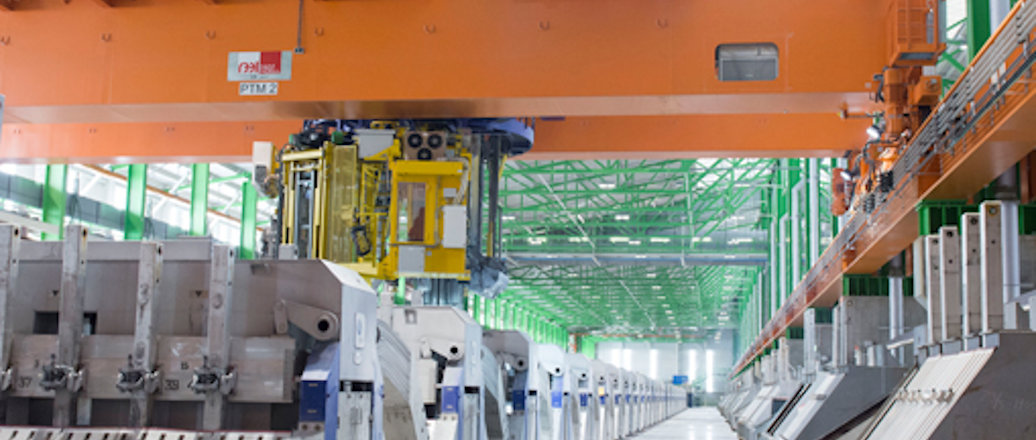“Our aim is to be the global leader in technology and innovation in our industry, and the Karmøy pilot helps advance that ambition and ensures that the Norwegian technology cluster remains the global leader in sustainable aluminum production” says Hydro president and CEO Svein Richard Brandtzæg.
The technology that is being tested at Karmøy will have the lowest CO2 footprint and will use 15% less energy during production compared to the world average in aluminum production.
The technology consists of 48 cells with 12.3 kWh/Kg HAL4e technology and 12 cells with 11.5-11.8 kWh/kg HAL4e Ultra technology. This is well under the world average of 14.1 kWh/kg aluminum and Hydro’s own average of 13.8 kWh/kg aluminum.
The first cell was started in January, while the last one was started Tuesday this week. During the start-up, Hydro has gradually increased the aluminum production in the pilot, tuning in all the equipment supporting the cells, handling the high magnetic fields and delivering on a new level of operational precision.
“The safe and successful start-up of the technology plant is a great achievement for the organization, and very promising for the next phase – running the pilot at full-scale to verify this technology,” says Hilde Merete Aasheim, who heads the Primary Metal business area in Hydro.
Several of the elements from the technology can be used in existing plants to lower energy consumption and improve productivity. Technology spin-offs to existing production lines in Hydro will contribute to Hydro’s capacity creep ambition of an additional 200,000 tonnes per year by 2025 vs 2015.
The total capital expenditures for the technology pilot is NOK 4.3 billion, supported by a contribution of close to NOK 1.6 billion from Enova, a Norwegian public enterprise which supports new energy and climate-related technology. Innovation Norway provided NOK 22.5 million in the early development of the pilot.
Published: March 1, 2019







